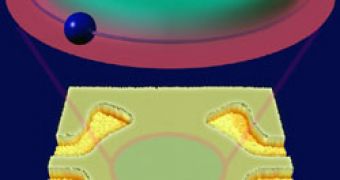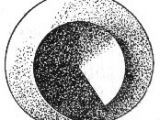One thing all physicists have known for decades is that all the particles in nature are of only two kinds: fermions and bosons. The fermions are the particles that insist on occupying a quantum state all by themselves, while bosons have nothing against sharing their place with no matter how many other particles.
However, physicists couldn't say why. Why are there only these two types of particles? The mathematical apparatus of quantum mechanics apparently allowed for certain combinations which were neither bosons, nor fermions. Thus, 30 years ago, it was proposed that maybe such combinations are indeed possible. They are called "anyons".
In the 1980s a new quantum phenomenon was discovered, called the Fractional Quantum Hall (FQH) Effect, and in 1998 three physics received the Nobel price for its discovery and explanation. Some had thought that maybe the FQH effect generated anyons, but at the time no one had checked that, as everybody was too concerned with the effect itself. However, right now it appears a definite empiric proof has finally been achieved.
The Hall Effect is as follows: when one passes a certain electric current through a wire and there's a magnetic field perpendicular on the wire, the electrons inside the wire deflect sideways, towards the surface of the wire - this generates a voltage across the wire's width. This effect across the wire's width is the Hall Effect.
The electric current due to the Hall Effect, Hall current, was initially thought to take only discrete values, because the electric charge is quantified. (The electric current is the amount of electric charge that passes thru something in a unit of time - it's a measure of how fast electric charge flows through something.) This is why the researchers were astonished when they have discovered that Hall current could take fractional values (the FQH effect).
This was proof that fractional charges actually do exist. In other words, the electrons lump together in some sort of quasi-particles that have fractional charges.
As if that wasn't enough, these quasi-particles have now been found to be anyons: they are neither fermions (like the electrons themselves), nor bosons (like light, or like the liquid Helium particles that form in a super-fluid). These particles are able to sit on top of each other in the same quantum state, but there's a limit, you can't have an infinite number of them stockpiled in the same quantum state.
What does this mean?
In order to understand, one can think about electrons. Electrons are fermions. However, they are definitely weird. You can have 2 electrons apparently standing on top of each other in the same place in space. But they are not really in the same place. They are in two different quantum states. This is because there are 2 different quantum states for each place in space. The true space is not the tri-dimensional space; it's a double-folded tri-dimensional space.
This means that when an electron rotates around its axis 360 degrees it gets from, say, the inferior fold to the superior one. It has to rotate another 360 degrees to reach its initial state, back on the inferior fold. All in all, it means that to turn around an electron completely you have to spin it around its axis 720 degrees!
But why should space have only two folds? Why not many more? This is what is weird about the discovery of anyons. They can be interpreted by saying space has many folds. That's why it seems one could have more than one anyon in one quantum state, but not an infinite number of them: because the quantum state is not the final reality either, it is folded (or, equivalently, the apparent tri-dimensional space is more than just double-folded).
The image above shows the experimental device researchers have created. The four voltage "gates" on the semiconductor surface created a central disk with quasi-particles having one-fifth of an electron's charge (red) surrounded by a ring of one-third charge quasi-particles (blue). Measurements on these quasi-particles have shown they are neither fermions nor bosons.
The research was conducted by eight scientists and was published in the Physical Review Letters last year.
Image credits: V. Goldman/Stony Brook Univ.

 14 DAY TRIAL //
14 DAY TRIAL // 
